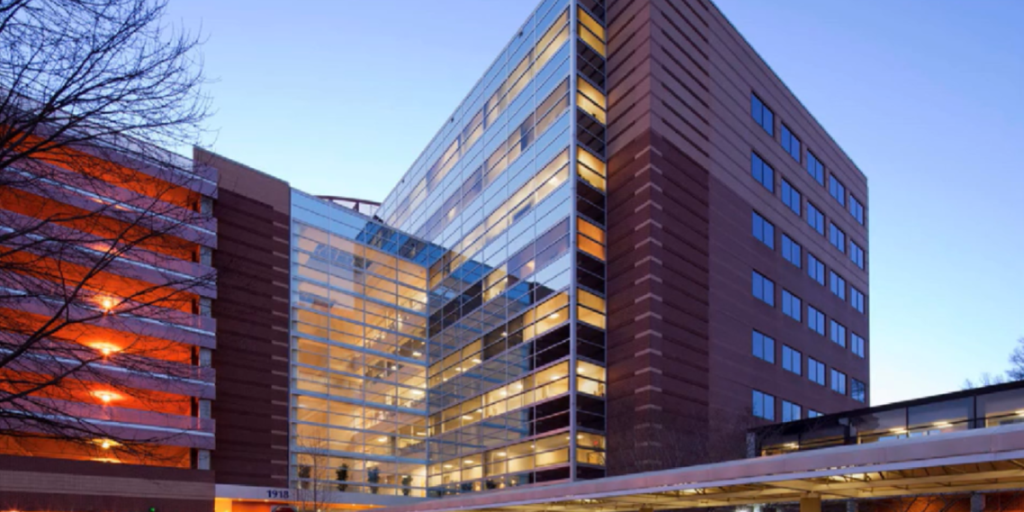

In what could be the largest medical office building (MOB) portfolio sale since last year’s Duke Realty sale, multiple healthcare real estate (HRE) industry sources tell Healthcare Real Estate Insights that CNL Financial Group plans to sell the MOB portfolio owned by its Orlando-based CNL Healthcare Properties real estate investment trust (REIT).
Sources say CNL has hired HFF and KeyBank to market the properties.
Efforts to contact executives of CNL, HFF and KeyBank have been unsuccessful. However, multiple HRE industry sources have told HREI that they have heard that a sale is in the works.
Not to be confused with CNL Healthcare Properties II, which was launched in 2016 and is still open to new investors, CNL Healthcare Properties is a non-traded REIT closed to new investors on Sept. 30, 2015.
According to a fact sheet available on its website, CNL Healthcare Properties developed and acquired properties with a total investment of about $3.02 billion from 2012 to 2015. The REIT consists of 58 percent senior housing, 31 percent MOBs, 6 percent post-acute and 5 percent acute care facilities, based on purchase price, development budget and/or capitalized cost.
Sources say that at this time CNL plans to sell only the MOBs, not the other assets. The REIT’s portfolio includes 54 MOBs totaling about 3.26 million square feet, according to the fact sheet.
The MOBs with the greatest valuation include: Midtown Medical Plaza, Charlotte, N.C., $54.7 million; Presbyterian Medical Tower, Charlotte, N.C., $36.3 million; Bend Memorial Clinic MOB, Bend, Ore., $36 million; Center One, Jacksonville, Fla.; $34.4 million; and UT Cancer Institute Building, Knoxville, Tenn., $33.7 million.
The total investment amount for the MOBs was $931.4 million, according to the fact sheet, which would almost certainly mean they would fetch more than $1 billion if sold in a competitive bidding situation.
Source: HREI

As head of Kaiser Permanente’s real estate division, Ethan Sullivan receives phone calls on a daily basis from developers, landowners and retail strip owners about wanting a Kaiser medical facility to anchor their properties.
But before those anxious owners get too excited, Sullivan immediately lets it be known that bringing in a Kaiser Permanente medical office or any kind of medical facility as a cornerstone of a retail strip or shopping mall is a serious commitment.
“When we make a decision to go somewhere, it is a lifetime decision,” said Sullivan, who serves as the executive director of real estate, national facilities services at Kaiser Foundation Health Plan. “We are making a commitment to that community to be in that location,” he said.
Much has been made about healthcare being the new retail that could eventually replace many of the big-box stores that have been struggling and closing. Trends influencing healthcare facilities will be discussed at Bisnow’s National Healthcare West event on June 7.
The U.S. healthcare industry is a $3.5 trillion business, said JLL Managing Director of Healthcare Solutions Chad Pinnell.
In 10 years, that number is expected to grow to $6 trillion, Pinnell said. He said the healthcare industry has moved toward preventive care, which can mean more visits to the doctor’s office.
Pinnell and Sullivan were part of a panel at the International Council of Shopping Centers’ RECon convention last week.
Over the past several years, there have been cases of big-box stores closing and being replaced with medical facilities. In 2010, when Blockbuster went out of business, Johns Hopkins Medical Management Corp. and Patient First opened four urgent care facilities in Maryland at locations the video store once occupied.
In New York, a Mount Sinai Urgent Care facility replaced a closed McDonald’s.
“They are a bigger industry than retail,” Pinnell said. “They touch more people. There are 300 million people in the U.S. and they all have healthcare needs.”
Pinnell said the biggest challenge healthcare providers have is distribution. Many networks are scattered, he said.
“In the next five to 10 years, what you are going to see are partnerships with retail centers and healthcare companies,” he said.
But for Kaiser Permanente, partnering with a landowner or developer to build a medical facility is not as easy as it seems, Sullivan said.
With 12 million members and rising, Kaiser Permanente operates a 71M SF real estate portfolio that includes nearly 40 hospitals and 700 medical facilities across eight states. The company owns 80% of its real estate and almost never sells, he said.
Sullivan said the healthcare company has plans to open 20 to 25 more medical facilities, averaging about 50K to 60K SF, within the next two years.
When it comes to choosing a site, Kaiser Permanente is very particular about the location.
He said much like retailers the healthcare company looks for areas where there is a heavy concentration of its members. Kaiser also looks at drive time — how long it is going to take members to get there, the parking situation and what retail stores are in that development or nearby.
“We love visibility,” Sullivan said. “We want people to be able to see us from the freeway, the corner, so our members know where we are in this town.”
Other challenges include getting city approvals and getting the right design for the facility. The average lease the company signs is for 10 years, but Kaiser builds facilities that could last for 50 to 100 years.
“My first question [to developers and landowners] is: Have you actually ever built a medical office building before?” he said. “It’s incredibly hard if you have never done it before. It is a significant investment.”
He said building a medical facility is not like developing a Toys R Us.
“You need to have an understanding of the right mechanical systems, know the intricacies of the machines we use and the lab usage,” he said, adding that the company’s design guideline is 132 pages long.
The type of services the medical facility offers will also dictate Kaiser’s demands.
“Primary care or specialty care or oncology all have a different set of walk-throughs with the city and design,” he said.
But if Kaiser Permanente does choose a property owner’s site, it can be a fruitful relationship.
Kaiser Permanente is a multibillion-dollar company and it is a good credit tenant. Having a medical facility anchor a place could drive people into the retail property, benefiting the surrounding businesses, Sullivan said.
“It’s a partnership. It’s a collaboration,” he said. “You are going to help bring our vision to life but you’re going to know early on what you are getting into.”
Source: Bisnow

Florida regulators have approved plans for three new hospitals in Lee and Collier counties, a decision that reverses the state’s view four years ago that no new health centers were needed in the region.
This means that Lee Health may proceed with plans to build an 82-bed hospital on a medical campus it is already building in Estero.
But it also means that HCA Healthcare, which left Southwest Florida more than a decade ago, may open its own 80-bed hospital and inpatient psychiatric facility near Corkscrew Road and U.S. 41 in that same community. The hospital also would become Lee County’s third receiving facility for people undergoing involuntary mental health evaluations under the state’s Baker Act.
The Florida Agency for Health Care Administration’s ruling on Friday said that both hospitals are needed to meet the needs of a rapidly growing county and to diversify its health care offerings:
“The Agency finds that approval of both applicants, collectively, will increase accessibility and availability of inpatient services while enhancing health care and fostering competition to promote quality and cost effectiveness to residents of the subdistrict.”
A third approved plan from Braden Clinic in Ave Maria calls for the construction of a 25-bed health center in that community.
NCH Healthcare System, which operates the largest hospitals in Collier County and competes with Lee Health for patients in south Lee County, had opposed all three bids.
None of the hospital systems had commented on the decision as of Friday morning.
The Players
The 102-year-old Lee Health, formerly known as Lee Memorial Health System, is a public hospital system governed by an elected 10-person governing board. It operates four acute-care hospitals in Lee County and a variety of specialty clinics and health centers, including The Golisano Children’s Hospital of Southwest Florida.
Lee Health also operates the only trauma center between Sarasota and Miami.
It frequently faces criticism for being a “monopoly” because it operates roughly 95 percent of the adult acute-care hospital beds in Lee County. For now, its only competitor is the 88-bed Lehigh Regional Medical Center in Lehigh Acres.
Nashville-based HCA Healthcare is the nation’s largest hospital operator with 179 hospitals, 120 freestanding surgery centers and a number of medical facilities in 20 states and the United Kingdom.
Its Florida holdings include Fawcett Memorial Hospital in Port Charlotte, Englewood Community Hospital and Doctors Hospital of Sarasota.
Gov. Rick Scott led what was then known as Columbia/HCA between 1987 and 1997. He left amid a federal investigation into its Medicare billing practices, which ultimately forced the company to pay $1.7 billion in penalties and fines between 2000 and 2002.
At the time, it was the largest health care fraud in the nation’s history, according to Politifact.
HCA formerly operated the now-demolished Southwest Florida Regional Medical Center and what was once known as Gulf Coast Hospital. Lee Health acquired both in 2006 in a $535 million deal.
Braden Clinic has been in Ave Maria for several years and provides a number of outpatient medical services, including primary medical care, urgent care and pediatric care. It also offers lab services.
Its hospital would serve Ave Maria, Immokalee and the surrounding rural communities, according to its website. It is expected to offer 24/7 emergency services, a pharmacy, a lab, rehabilitation care, imaging, an infusion center and cardiorespiratory.
Source: Naples Daily News

Florida ranks No. 48 in a new ranking of state health care systems (and the District of Columbia) published by The Commonwealth Fund, a private foundation that works to achieve better better health care access for low-income Americans, the uninsured, minorities, young children and elderly adults.
Overall, the state’s health care system worsened since last year’s ranking. Deaths from suicide, alcohol and drug use increased during the period studied, according to the report, which contributed to the drop in ranking. The portion of people 64 and younger without insurance, meanwhile, improved.
Source: Sarasota Magazine
